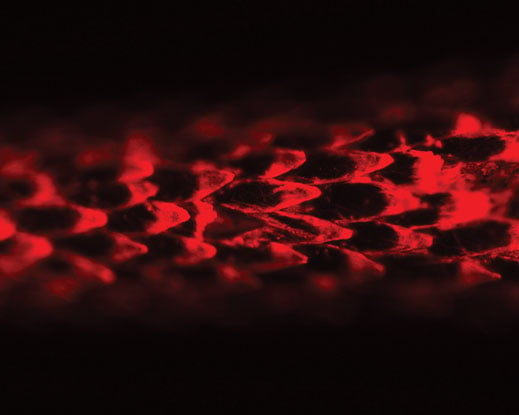Finer Point
Porcupine quill study could lead to better needles and surgical adhesives
Anyone unfortunate enough to encounter a porcupine’s quills knows that they go in much more easily than they come out. Researchers at MIT and Brigham and Women’s Hospital now hope to exploit the porcupine quill’s unique properties to develop new types of medical devices.
In a recent study, the researchers characterized, for the first time, the forces needed for quills to enter and exit the skin. They also created artificial devices with the same mechanical features as the quills.
“With further research, biomaterials modeled on porcupine quills could provide a new class of adhesive materials,” says Institute Professor Robert Langer, a senior author on the study. The researchers say that such adhesives would be very useful for patients who have undergone gastric or intestinal surgery. These surgical incisions are now sealed with sutures or staples, which can leak and cause complications.
This story is only available to subscribers.
Don’t settle for half the story.
Get paywall-free access to technology news for the here and now.
Subscribe now
Already a subscriber?
Sign in
You’ve read all your free stories.
MIT Technology Review provides an
intelligent and independent filter for the
flood of information about technology.
Subscribe now
Already a subscriber?
Sign in
The team studied the North American porcupine, which fends off predators with about 30,000 barbed quills. “Evolution is the best problem-solver,” says study author Jeffrey Karp, codirector of the Brigham’s Center for Regenerative Therapeutics. The quills’ features could inspire not just stickier adhesives but less painful needles.
Each quill is several centimeters long, and the four millimeters at the tip are covered with microscopic barbs (shown at left). The researchers showed that the barbs localize penetration forces, allowing the quills to tear through tissue fibers very easily—just as a serrated knife cuts through tomato skin far more cleanly than a straight-edged knife. When the quill is pulled out, the barbs act like anchors that keep it in place. After creating a prototype adhesive patch with an array of barbed quills on one side, the researchers found that it required 30 times more energy to remove than a patch that had quills without barbs.
Langer and Karp introduced the concept of gecko-inspired medical bandages in 2008; however, “these require a reactive glue to adhere to wet tissues, while porcupine-quill-inspired adhesives attach to tissues beautifully without requiring the use of reactive chemistry,” Karp says. “They are extremely versatile and potentially universal in their application.”
